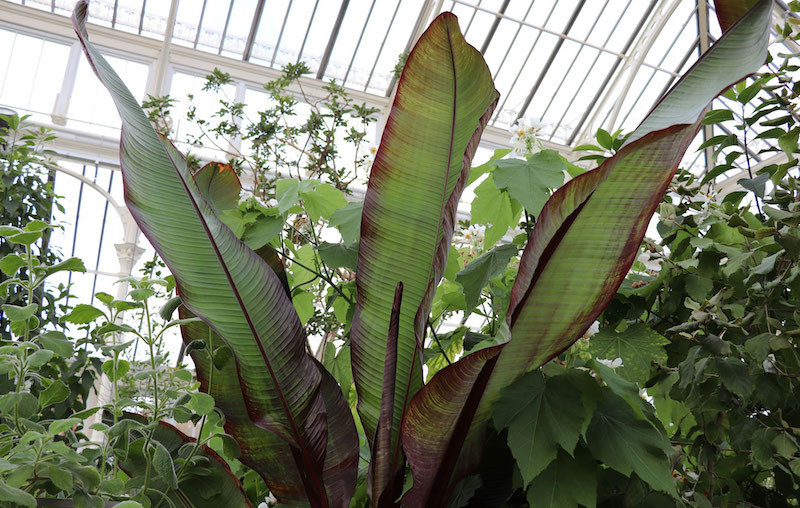One of the two enset – or ‘false banana’ – plants at Kew Gardens in London has flowered for the very first time. Situated in the Temperate House, the specimen will only flower once before it withers and dies, with a flowering period of only a few weeks or months. Enset plants are described as ‘wonder crops’ because they are remarkably hardy against droughts and disease. Dr James Borrell, the Research Leader in Trait Diversity and Function at Kew, said: ‘Not many people have heard of enset out of Ethiopia and that’s a shame because this truly remarkable plant is a vital source of nutrition for millions of subsistence farmers across the region. ‘Enset has a unique set of characteristics that set it apart from other familiar crops; most importantly it’s a perennial and be planted and harvested at any time. ‘As a result, farmers can treat enset as a “green asset” to buffer against food shortages when other crops fail or are otherwise unavailable, much like a bank account for food. ‘It is no surprise then that Ethiopians frequently refer to enset as the “tree against hunger”.’
A 2022 review of extreme weather hazards showed that climate change is making heatwaves more intense and more likely, and the impact in terms of lives lost and financial costs is being underestimated. The UN warned last year that they will make entire regions of the world uninhabitable within decades. The recent study from Kew found that enset could be grown over an area up to 12 times larger than it is currently, over Ethiopia, Kenya and Uganda. Doing so would provide essential food security to these regions, even in the worst case scenarios for global emissions. The study also found that wild and domesticated enset tolerate slightly different conditions, so cross-breeding could be an option to increase its resilience if necessary.
The two specimens at Kew arrived in 2019, when they were just (30 cm) tall, but have since grown to several metres, creating a huge canopy of leaves. Their exact ages are not known, but the plant does take about four or five years to mature. After the flowering specimen dies, horticulturalist at Kew will choose a healthy specimen to replace it and keep the display going. David Cooke, the supervisor at Temperate House, said: ‘Seeing the enset in flower now is a sombre reminder that its time with us is coming to an end but also a testament to the wonderful work our horticulturists and scientists carry out to learn more about the natural world and to protect this planet’s biodiversity.’ Source: www.dailymail.co.uk/sciencetech

